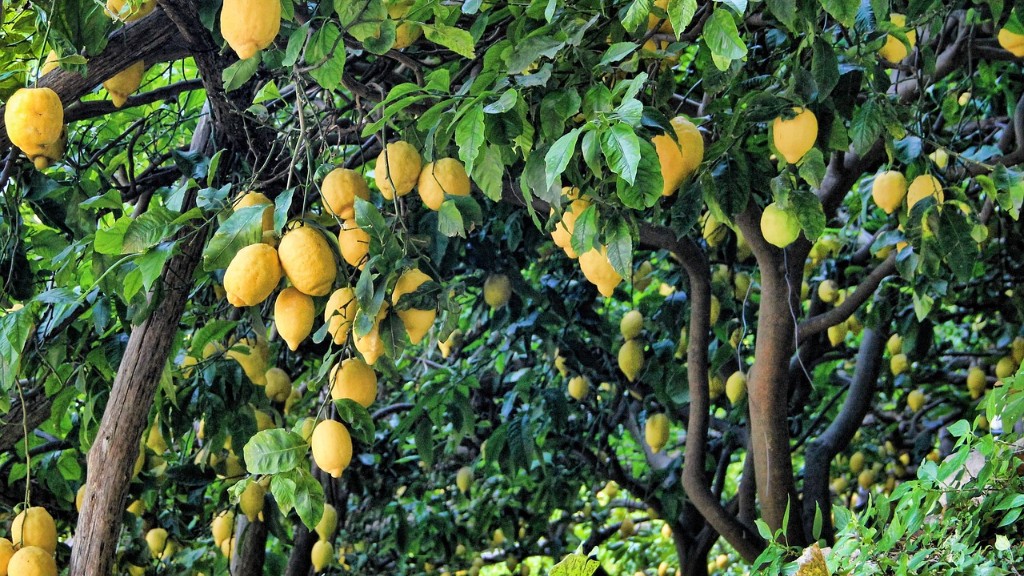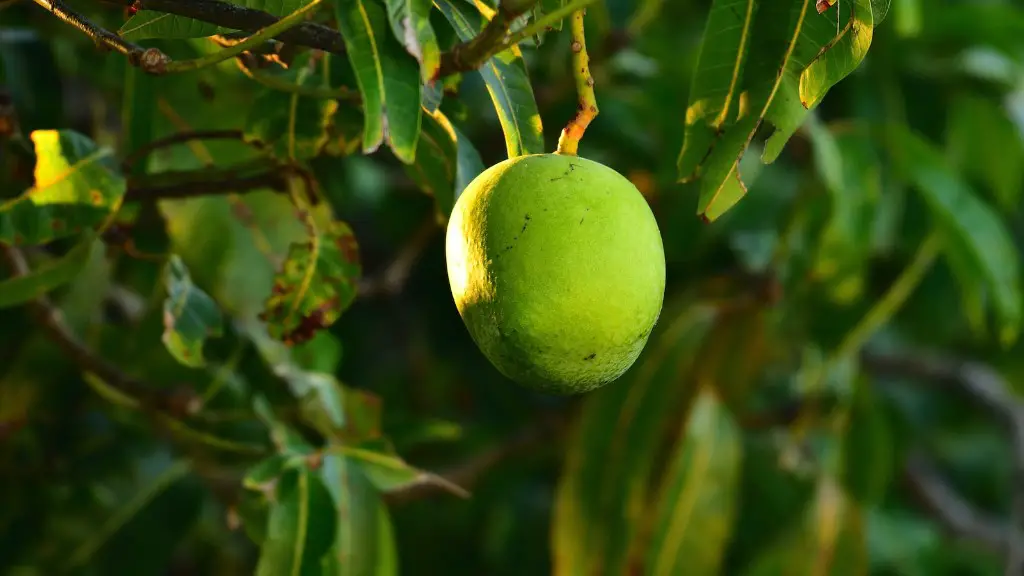Growing a lemon tree from seed is an exciting and rewarding process, especially when the fruits start to appear. It may seem complicated but with a little patience and the right guidance, anyone can become an amateur citrus grower.
The first step to growing a lemon tree from seed is to purchase a suitable variety. Popular varieties for home growing include Eureka, Lisbon and Feminello. Then, obtain good quality, organic lemon seeds and stratify them for two to three weeks – this will break their dormancy and prepare them for planting.
Use fresh soil and compost to fill pots and sow the lemon seeds. Place the pots in a warm, sunny spot and water regularly. Lemon seedlings will start to emerge in two to five weeks. As they grow, they should be transferred to bigger pots, given fertilizer and regularly watered.
When the lemon seedlings are mature enough, they should be transplanted into the ground. Dig the soil thoroughly, fertilize and water properly and then carefully place the root ball of the lemon seedling into the soil.
Provide appropriate support for the lemon tree. Pruning the branches regularly for the first few years will give the tree a strong structure. To ensure good crop of lemons, add a good layer of mulch around the base of the tree.
Watering and Fertilization
It is important to water the lemon tree regularly. If grown in a container, check the soil moisture daily and water when the top 3-4 inches of soil is dry. Water the tree deeply at least once a week. Lemon trees love sunshine and heat, so ensure that they get enough of both.
Fertilizing the lemon tree is important to ensure healthy growth and adequate nutrition. Use the right fertilizer, following proper guidelines and feed the tree weekly. Apply the fertilizer in small amounts and give it some time to settle.
Ensure that pests and weeds aren’t allowed to infest the tree. If needed, use natural pest control methods and be sure to remove weeds by hand or with a hoe.
Harvesting and Storing
When the lemons start to ripen, they should be harvested carefully. To assure the best flavour, leave them on the tree until the rind is full yellow and the fruit is tender. Cut the fruit off the tree and store it in a cool, dry place.
If the lemons won’t be used immediately, preserve them in a sealed bag or container. Otherwise, they can be frozen or juiced, or used to make delicious jams and pies.
Pruning
It is important to prune your lemon tree regularly. Pruning can help the tree to produce more lemons and aid in proper fruit development. Prune as soon as the tree starts flowering, then again when fruit is set, and finally at the end of the season.
When pruning, be sure to remove diseased branches and damaged or dead wood. Also, cut back extra-long limbs and create an open center to allow light and air to circulate within the tree. This will help the lemon tree to stay healthy and grow faster.
Other Tips
Make sure the lemon tree is in an area where temperatures don’t drop below 0 degree Celsius. Mulch around the base of the tree to conserve soil and water. Citrus trees can’t survive heavy frost, but they can survive in mild frost.
Trees planted in soil with a clay base or in shady areas will require more water than those planted in sandy soils and sunny spots. Water in early morning or evening, as hot temperatures during midday may burn the leaves.
You can propagate additional trees by taking cuttings from already established trees. Just snip a small piece of a young branch and plant it in the desired location.
Disease and Pest Control
Check your citrus tree regularly for signs of diseases, such as blights, molds and canker, and take steps to treat them if found. Also, watch out for diseases caused by overwatering, such as root rot.
Pests such as mites and aphids can also damage the tree and affect its growth. Remove aphids and mites by pruning off infected branches and using insecticidal soap or neem oil. Use natural methods of pest control to avoid harming beneficial insects or the environment.
Lemon trees also require periodic spraying with a solution of zinc sulfate to prevent zinc deficiency. Keep an eye out for other nutrient deficiencies, such as magnesium and iron, and use the right supplements to address the issue.
Protecting from Winter Damage
Depending on the climate, lemon trees may be at risk of winter damage in extreme cold. To protect the tree during winter, cover it with burlap or a tarp and place a few layers of mulch around its base. You can also use artificial lighting, such as incandescent lights, to provide warmth and light to the tree.
Digging a trench around the tree can help preserve the roots and prevent them from freezing. Also, be sure to trim off dead or damaged branches and dispose of fallen leaves so they don’t build up and become a source of disease.





